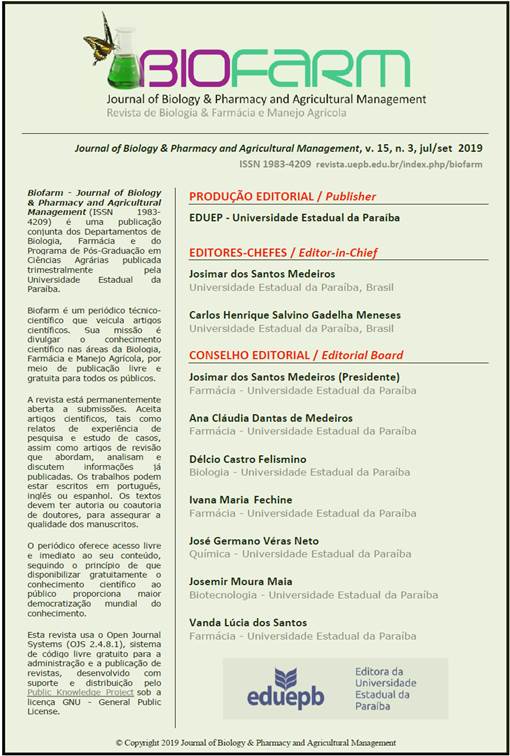UMA REVISÃO DO POTENCIAL BIOTECNOLÓGICO DE LECTINAS DO GÊNERO Canavalia e Dioclea
Resumo
As lectinas compreendam como uma classe de proteínas com habilidade de reconhecer carboidratos sem necessidade de apresentar atividade catalítica. Lectinas vegetais desempenham várias funções biológicas, tais como, sinalização celular e de defesa da planta, além disso, essas proteínas são antitumoral, antiviral, vaso relaxante e atividades pro e anti-inflamatórias. Deste modo, o objetivo deste estudo foi revisar a literatura disponível sobre o uso de lectinas do gênero Canavalia e Dioclea com potencial biológico e suas aplicações futuras na saúde humana. Canavalia brasiliensis, Canavalia boliviana, Canavalia grandiflora, Canavalia maritima, Canavalia gladiata, Canavalia ensiformis, Dioclea sclerocarpa, Dioclea reflexa, Dioclea violacea e Dioclea guianensis apresentam ser um potencial biotecnológico no desenvolvimento de pesquisas que visem a detecção de novos compostos com atividade antimicrobiana, anti-inflamatória, analgésica, antinociceptiva, antidepressiva e efeito vasodilatador.
Downloads
Publicado
Como Citar
Edição
Seção
Licença
Copyright (c) 2023 BIOFARM - Journal of Biology & Pharmacy and Agricultural Management

Este trabalho está licenciado sob uma licença Creative Commons Attribution 4.0 International License.
Authors and co-authors retain copyright, but cede the right to first publication to the Journal of Biology & Pharmacy and Agricultural Management (BIOFARM).
Copyright encompasses exclusive rights to reproduce and deliver the article in all form and media, including reprints, photographs, microfilms and any other similar reproductions, as well as translations. The reproduction of any part of this journal, its storage in databases and its transmission by any form or media - such as electronic, electrostatic and mechanical copies, photocopies, recordings, magnetic media, etc. - will be allowed only with a written permission from the BIOFARM.
Articles published in BIOFARM will be Open-Access articles distributed under the terms and conditions of the Creative Commons Attribution License (CC BY). The copyright is retained by the author(s). BIOFARM will insert the following note at the end of the published text:
© 2023 by the authors; licensee BIOFARM, Campina Grande, Brazil. This article is an open access article distributed under the terms and conditions of the Creative Commons Attribution License (http://creativecommons.org/licenses/by/4.0/).


